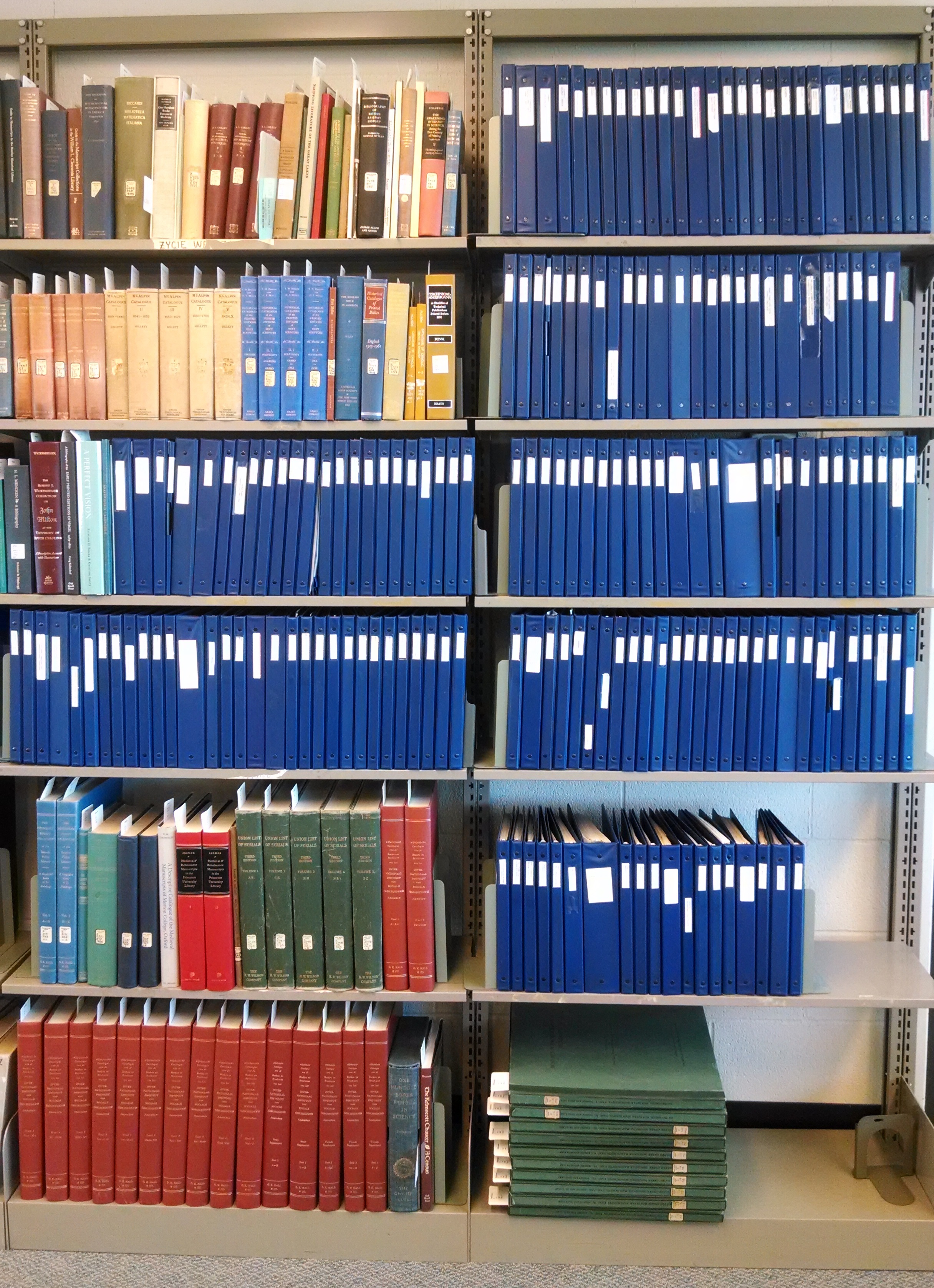If you are familiar with the Special Collections Library, you might already know that not all of the archival or manuscript materials in our collections are online. Not even close. However, for a good portion of our archives and manuscript collections the tools for discovering and identifying what's relevant to your research – finding aids, as archivists call them – are online, openly available, searchable, and even broadly discoverable through web tools like ArchiveGrid. And then there are these guys…

On our reference shelves are 186 of these blue binders. Some contain printed copies of those above-mentioned finding aids that are online and marked-up with Encoded Archival Description, listing contents of archival boxes at the folder level. These can be particularly handy if you’re working with boxes in the Reading Room and don’t have a web-enabled device with you; you can consult the finding aid as you go through materials.
Some others of these binders contain what we might call “legacy” finding aids, some pre-dating electronic word processing, that include item-level descriptions of documents in smaller collections. These paper finding aids are often very detailed and useful…but their formatting makes them a bit of a challenge to easily convert using optical character recognition or similar methods.

First page of the Henry Buck Civil War Papers finding aid. The column format is meaningful if you are able to see it, but does not lend itself to OCR!
And then there are some that are perhaps less helpful…

Handwritten contents of Roy William Cowden’s unfinished manuscript, The Creative Process in Writing. We have a handful of different collections that contain materials related to Cowden, but only this inventory is currently in the “Cowden” binder in the Reading Room. Reconciling this someday goes on the to-do list…
There are catalog records in Mirlyn for nearly all of our archival and manuscript materials, and these records typically include at least contributor or correspondent names so that materials associated with particular individuals can be discovered. If you come across any of these collections that indicate “Unpublished finding aid in the repository” and want to know more, please feel free to get in touch with us! We do have scanned PDF copies of all of these binders that we are happy to share. We aim to help in whatever we ways we can to make our collections useful!